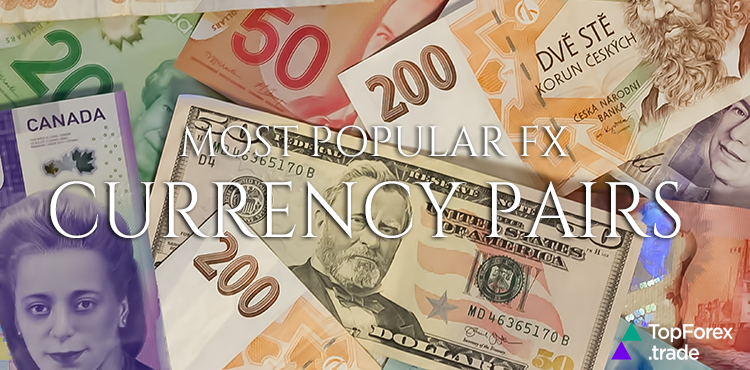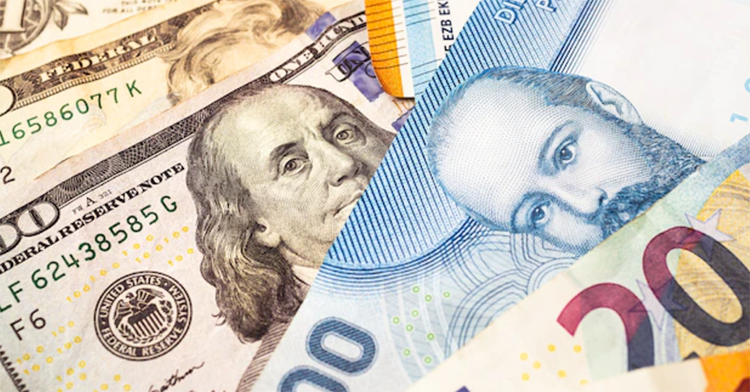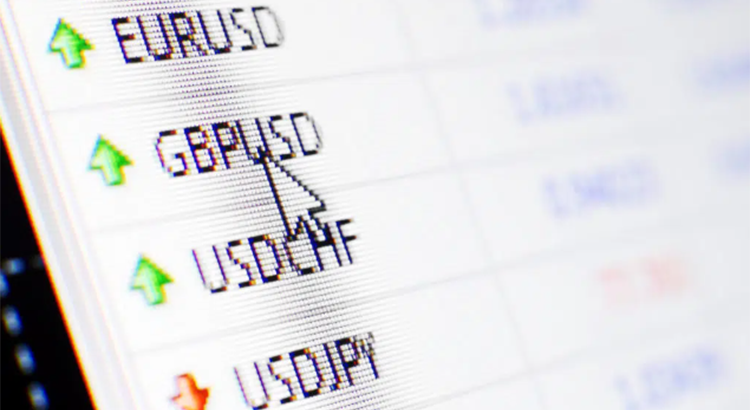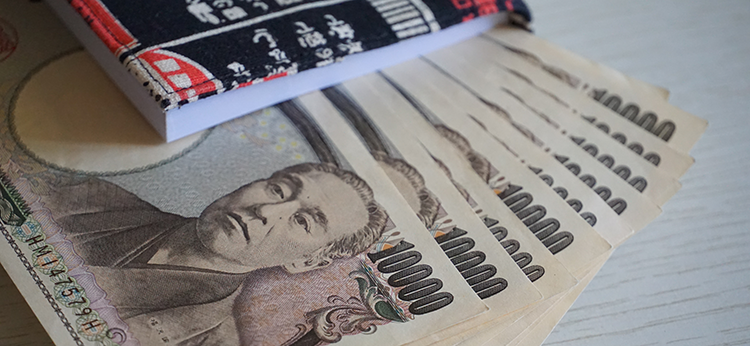Ultimate guide on the most popular currencies and traded FX pairs

From Sunday evening through Friday night, the Forex market is open 24 hours a day, taking advantage of the international time zone disparities between London, Tokyo, and New York. So as currency traders can open and settle positions at any time of the day without the constraints that other markets impose, Forex market hours are considered more flexible.
When you trade Forex, you’re betting on the value of one currency falling or rising against another. Foreign exchange trading is a “relative value” trade, which means you’re looking for one currency’s value to depreciate or appreciate in relation to another. As a result, Forex trading asks us to choose which currency we believe will gain in value and which currency we believe will fall in value, as well as their relative values.
Spread betting and CFD trading are both leveraged products that can be used to trade forex. As traders are only required to place a fraction of the complete trade value, known as a margin requirement, this implies that while there is a chance of maximizing earnings, there is also a chance of losses. This article will explain how to trade some of the most popular FX pairs.
Most globally traded currencies

With trillions of dollars transacted between millions of parties around the world every day, Forex is the world’s largest and most liquid market. Gaining acquaintance with some of the more widely traded currencies is one of the first steps in comprehending the market. Here are six major currencies, as well as the attributes and characteristics that each one possesses.
The United States dollar
The United States dollar, also known as the greenback, is the most widely traded currency on the planet, the number one spot currency in Forex trading. The United States dollar is found in a currency pair with all the other major currencies and is frequently used as a middleman in triangular currency transactions. This is because the US dollar is the world’s unofficial reserve currency, held by practically every central bank and major investment body.
Furthermore, because of the dollar’s global acceptability, several countries utilize it as their official currency instead of their local currency, a practice known as dollarization. The US dollar may also be widely accepted in other countries as an informal alternate method of payment while those countries’ official currencies are maintained.
The dollar is also a major player in the foreign exchange rate market for other currencies, where it can serve as a benchmark or target rate for countries that want to fix or peg their currencies to the value of the dollar. To the chagrin of many economists and central bankers, China’s currency, the yuan or renminbi, has been tied to the dollar for a long time. Rather than allowing the free markets to drive the currency’s relative value, governments frequently peg their currencies to the US dollar to stabilize their exchange rates.
The dollar is also used as the standard currency for most commodities, including crude oil and precious metals. As a result, not only are these commodities subject to price variations due to supply and demand, but also to the relative worth of the US dollar, with prices especially sensitive to inflation and US interest rates, both of which can alter the currency’s value.
The Euro
After the US dollar, the euro has become the second most traded currency. The euro, which is the official currency of the majority of Eurozone countries, was first introduced to global markets on January 1, 1999, with banknotes and coinage following three years later.
Many countries in Europe and Africa, in addition to being the official currency of the Eurozone, peg their currencies to the euro for the same reason that currencies are linked to the US dollar: to keep the exchange rate stable. As a result, the euro is the second-largest reserve currency in the world.
The euro is a widely utilized and trusted currency in the Forex market, and it adds liquidity to any currency pair with which it trades. Speculators frequently trade the euro as a bet on the Eurozone’s and member countries’ overall health. Political events within the Eurozone can also result in huge trading volumes in the currency, particularly in countries like Italy, Germany, Greece, Spain, and Portugal, which saw their local interest rates decrease dramatically around the time of the euro’s foundation. In the FX market, the euro may be the most “politicized” currency.
The Japanese Yen
The Japanese yen is by far the most widely traded Asian currency, and many experts regard it as a proxy for Japan’s industrial and export-driven economy. The yen moves in lockstep with Japan’s economy (in some respects). Forex traders also use the yen to assess the general health of the Pan-Pacific area, taking into account economies like South Korea, Singapore, and Thailand, which are usually less traded in the global Forex markets.
In Forex communities, the yen is also well-known for its involvement in the carry trade (seeking to profit from the difference in interest rates between two currencies). The method entails borrowing the yen for next to nothing (because of low-interest rates) and investing the borrowed funds in higher-yielding currencies around the world, pocketing the rate differentials.
Because the carry trade is such an important aspect of the yen’s worldwide presence, the Japanese currency’s ongoing borrowing has made appreciation difficult. Though the yen trades on the same fundamentals as any other currency, its relationship to worldwide interest rates, particularly those of the more heavily traded currencies like the US dollar and the euro, is a major determinant of its value.
The Great British Pound
In the Forex market, the Great British pound, usually known as the pound sterling, is the fourth most traded currency. Despite being a member of the European Union for years, the United Kingdom never adopted the euro as its official currency for a variety of reasons, including historic pride in the pound and the need to keep domestic interest rates under control. As a result, the pound is sometimes regarded as a pure-play currency in the UK.
The general strength of the British economy and the political stability of its government are often used by Forex traders to evaluate the value of the British pound. The pound is an important currency benchmark for many countries and a relatively liquid component of the Forex market due to its high value relative to its rivals. Due to its historically high relative worth compared to other global currencies, the British pound also serves as a substantial reserve currency.
The Australian Dollar
The Australian dollar, also known as the “Aussie”, is one of the most important currencies in the Asia-Pacific area. The Australian dollar is regarded as one of the most important commodity currencies, which means that price changes in Australia’s primary exports can affect its value.
The AUD-USD trading pair now accounts for 6.37% of global Forex turnover, surpassing the Swiss Franc and Canadian Dollar pairings.
The Canadian Dollar
The Canadian dollar is a commodity currency, moving in lockstep with commodity markets like crude oil, precious metals, and minerals. Since Canada is such a significant supplier of such goods, the currency is frequently affected by changes in underlying commodity prices, particularly crude oil. Traders frequently trade the Canadian dollar to speculate on commodity price changes or to hedge commodity market positions.
Each currency has unique characteristics that influence its underlying value and price changes in relation to other currencies on the Forex market. Understanding the elements that influence the value of a currency is essential to becoming a knowledgeable Forex trader. The US dollar, euro, yen, British pound, Canadian Dollar, and Swiss franc are all key currencies to keep an eye on.
Most popular currency pairs for trading

When you buy or sell one currency, you automatically do the opposite with another, as currencies are always traded in pairs. There are a base currency and a quotation currency in every currency pair; the base currency appears first, and the quote currency appears to the right.
The price shown for a currency pair is the amount of the quote currency required to buy one unit of the base currency. The EUR/USD currency pair, for example, has EUR as the base currency and USD as the quoted currency. If the quoted price was 1.2000, one euro would be worth 1.20 US dollars.
Certain currency pairs are more liquid than others, theoretically making them easier to trade. It also implies that highly liquid instruments are more heavily traded in general. The info about the most popular currency pairs with the biggest trading volumes can be found below.
As a rule of thumb, any currency combination that does not involve the US dollar is referred to as a ‘Cross rate’ (or Cross). EUR/JPY (Euro to Japanese Yen), GBP/JPY (Pound to Japanese Yen), and EUR/GBP are all popular cross rates (Euro to Pound).
In addition, there are a number of significant currency pairs, all of which involve at least one of the major currencies.
EUR/USD
The Euro to US Dollar currency pair is the most widely traded Forex pair on the market, as it includes currencies of the world’s most powerful economies: Europe and the United States. With EUR/USD, traders are essentially trading the euro against the US dollar. As a result, if the USD grows in value, the EUR/USD pair falls in value, as the USD becomes more valuable than the EUR.
This Forex pair belongs to the majors’ category, and it is less volatile than other currency pairings due to its strong liquidity. Traders should be mindful, however, that even the most liquid instruments can become extremely volatile in certain circumstances. Furthermore, economic factors such as the Federal Reserve’s interest rate decision, inflation, monetary policy changes, and geopolitics can all have an impact on the pair.
USD/JPY
The USD/JPY is another major currency pair. After EUR/USD, the US Dollar to Japanese Yen currency combination is the second most traded pair. To put it another way, this currency pair shows how many Japanese Yen are needed to buy one US dollar. Although the USD/JPY has a lot of liquidity, it can also be considered a ‘safe haven’ currency during times of global economic instability. Political and economic events in China and North and South Korea, however, can have a significant impact on the JPY, which is sometimes referred to as the “Gateway to the East.”
GBP/USD
As it was the first currency pair to be exchanged through telephone lines or cables that crossed the Atlantic Ocean, the British Pound to US Dollar currency pair is often known as ‘Cable’. The United Kingdom and the United States are two of the most powerful western economies, with close trading ties. However, the persistent uncertainty surrounding the United Kingdom’s plans to leave the European Union (“Brexit”) has increased volatility in the GBP/USD. The pound is also heavily traded against the euro, as the EUR/GBP cross-pair demonstrates.
USD/CAD
Since it has a picture of a loon bird, the US Dollar to Canadian Dollar money combination is known as the “Loonie.” Since Canada is a major exporter of oil, minerals, and cereals, the Canadian Dollar is closely linked to commodity trading. International trade flows in these commodities provide substantial liquidity in USD/CAD, but they can also experience high degrees of volatility, just like commodities.
AUD/USD
This is the currency pair between the Australian Dollar and the US Dollar. This was once the third most popular currency combination in the world. Australia, like Canada, is a significant exporter of natural gas, coal, iron ore, and agricultural products. The AUD/USD has a lot of liquidity due to international trade flows in these commodities, but it also has a lot of volatility.
EUR/GBP
The combination of the euro and the British pound is widely regarded as one of the most difficult to anticipate accurately as the EUR and GBP have a long history of being linked due to the UK’s closeness to Europe and the resulting strong trade links between the two economies.
This currency pair’s price has swung wildly in recent years, owing mostly to the uncertainty surrounding Brexit. Although the high level of volatility may entice traders, it is better to have a risk management strategy in place and a reliable broker to do it with before entering a volatile market.
USD/KRW
The US dollar against the South Korean won accounted for 1.9% of daily Forex transactions already in 2019 – the first time it has cracked the top ten most traded currencies list.
As for now, the South Korean economy has risen to become the 5th largest in Asia after China, India, Indonesia, and Turkey and the eleventh largest in the world since the turn of the century. This could explain the surge in USD/KRW activity, as traders and speculators seek exposure to markets other than Japan, Hong Kong, and China.
South Korea’s economic growth has been so astounding – especially since the Korean War ended in 1953 – that it’s been dubbed “the Miracle on the Han River.” South Korea is a member of the United Nations, the Organization for Economic Co-operation and Development (OECD), and the Group of 20 (G20), giving the country and its currency an attractive potential for many market participants.
While the EUR/USD leads the way in terms of daily traded volume in Forex pairings, traders can choose from a variety of other feasible currency pairs with high liquidity in order to make a profit. Before choosing a currency pair to trade, traders should evaluate a variety of criteria and do their own Technical analysis and Fundamental analysis to determine whether the currency pair is a viable trading choice at that given time, based on central bank pronouncements or current trade disputes.
Safest currencies for Forex trading

Aside from the aforementioned common Forex pairs, the market also includes “safe-haven currencies,” defined by traders due to the fact that, while the Forex market is liquid, it is also exceedingly volatile and chaotic. As a result, previously strong Forex pairings may decline as a result of economic shifts. During times of economic uncertainty, however, the value of particular currency pairs tends to remain steady or increase.
A safe haven is “a place where someone can go to be safe from danger or attack,” according to its literal meaning. This word refers to currencies that traders allude to in times of financial turbulence in the Forex market due to the fact that such currencies often hold their value or even increase in value while the market falls.
Safe havens also relate to currencies, commodities, and equities in the trading industry. Gold, for example, is regarded as a safe-haven commodity because of its long-term value.
- The US dollar has long been a safe-haven currency for traders since it is the reserve currency of the world’s largest economy and has the highest market liquidity.
- The Japanese yen has demonstrated its ability to emerge from the ashes of market turbulence and uncertainty on several occasions in the past. For example, amid financial turbulence such as the 2008 financial crisis, when many currencies depreciated, the Japanese yen surged by over 20%.
- The Swiss franc, Switzerland’s national currency, is a safe haven currency since it moves in the opposite direction of market turmoil due to the Swiss government’s and financial system’s stability: the Swiss franc has appreciated versus other safe-haven currencies on several occasions. It appreciated by 10% versus the US dollar during the Covid-19 outbreak in 2020, for example.
Best Forex brokers for currency pairs trading
When choosing a currency pair to trade in the foreign exchange market, it’s common advice to stick with your native currency because you’ll be more familiar with domestic political and economic happenings. Furthermore, economic events and trends are frequently covered by news outlets and discussed on social media, making it easy to research them.
Use free demo accounts provided by reliable brokers, which feature live market quotes and a variety of Forex trading indicators, to test your trading strategy with popular exchange pairings. You’ll be able to watch the currency pairings perform in real-time and become comfortable with the trading tools and terminology.
Forex brokers listed below follow the requirements of the world’s most stringent financial regulators and have been serving their clients for decades. Despite the fact that some of them have geographical limits, you may safely register an account with them wherever you are using a free VPS or VPN service. They offer the widest range of currency pairs as well as other financial instruments such as Cryptocurrencies, as well as some of the best trading conditions, including Forex bonuses of up to $5000 even on first deposits (subject to geographical availability), Social trading, swap-free Islamic accounts, and negative balance protection.
Plus500 CFDs trading
Plus500 has been in the industry for more than a decade, and so it offers CFDs for currency pairs, commodities, equities, Indices, and Crypto, as well as a trading guide and all the tools needed to make trading more effective and secure.
Clients of Plus500 have access to a web terminal for PCs and laptops, as well as an Android and iOS mobile app with two types of accounts: real and demo. The second will offer new brokers an ideal opportunity to practice, test their trading skills, and get significant knowledge in real-world market conditions while remaining completely risk-free.
Plus500 is a credible CFDs broker that is licensed by the UK Financial Conduct Authority, the Australian Securities and Investments Commission, the Cyprus Securities and Exchange Commission, and the Financial Markets Authority in New Zealand. It is also a South African-regulated financial services provider, with a Financial Sector Conduct Authority license.
82% of retail investor accounts lose money when trading CFDs with this provider. You should consider whether you can afford to take the high risk of losing your money.
OANDA Forex trading
OANDA is a well-known broker for traders all across the world. Currency pairs, cryptocurrencies, indices, commodities, bonds, and metals are among the more than 100 financial instruments accessible for trade. The broker’s nine basic currencies are EUR, GBP, CHF, USD, CAD, AUD, JPY, HKD, and SGD.
OANDA is considered to be one of the most trustworthy Forex brokers. It has operating licenses in several countries and is a member of the IIROC, FCA, and ASIC regulatory bodies.
Furthermore, the broker offers three account types globally: demo, standard, and advanced trader, making it suitable for both novice and experienced traders. OANDA encourages traders to test their skills by using a demo account with an unlimited quantity of virtual money and an indefinite length of use.
NAGA Markets Forex trading
NAGA Markets is a top-rated broker that trades currency pairs (majors, minors, and exotics), equities, exchange-traded funds (ETFs), futures, commodities, and metals, among other asset classes. There are various trading platforms accessible, including MetaTrader 4 and 5, as well as NAGA Webtrader, the broker’s original platform with mobile versions.
NAGA is a Social trading network where clients of all levels of experience may trade, share, and replicate assets on over 950 different trading instruments. The broker’s trading conditions are distinguished by tight spreads, low costs, swift trade execution speeds, and a variety of configurable account funding ways.
The broker complies with many regulatory requirements around the world, including the FCA, CySEC, MiFID II, and MiFIR, to make investing services available to clients in various jurisdictions.
XM Group Forex trading
XM Group is a global online Forex broker that offers over 1000 trading instruments, including over 55 currency pairs, metals, commodities, and equities, all of which may be traded on the MT4/MT5 platforms. The broker also offers a mobile app that allows you to trade in foreign markets with only one login, whether you’re using a demo or an actual account.
Furthermore, the broker provides a virtual private server (VPS) service, which allows clients to fully experience all of the benefits of trading with XM without having to worry about other factors that can hinder or disrupt high-quality transactions, such as Internet connection speed or power outages.
One of the many benefits of the XM Group is that deposits and withdrawals are completely free: the broker covers all payment system commissions. The most profitable trading accounts on unique terms with negative balance protection, good leverage, and tight spreads include Micro, Standard, XM Ultra Low, and Shares. A broker is also licensed by CySEC, IFSC, DFSA, and ASIC to safeguard the safety of traders all over the world.
Most popular currencies and traded FX pairs - FAQ